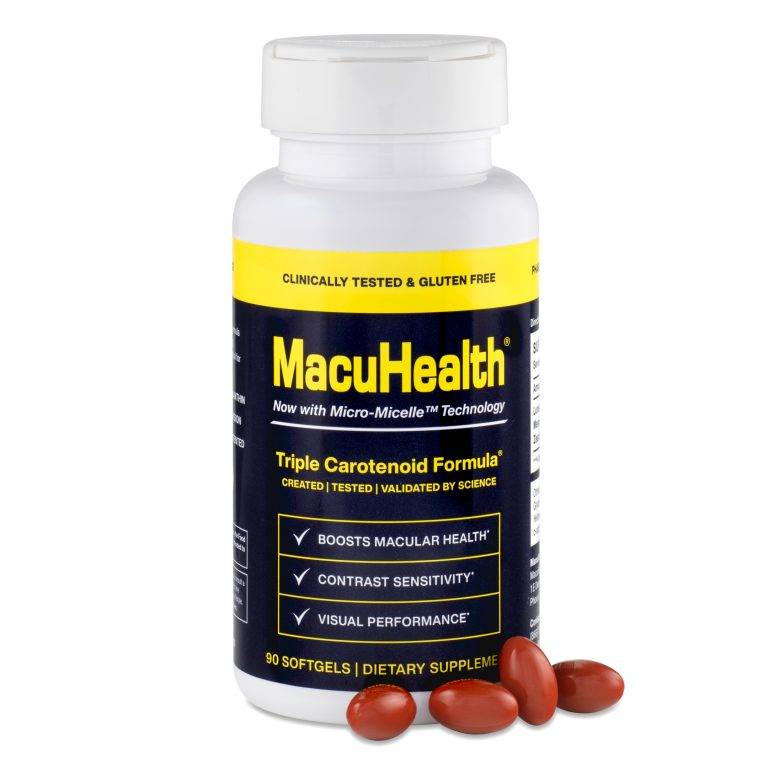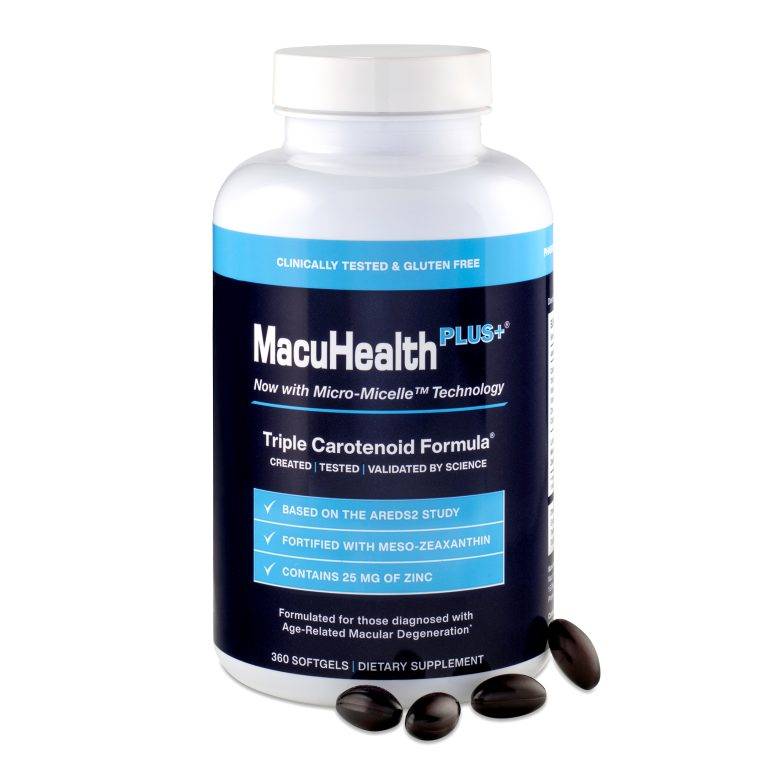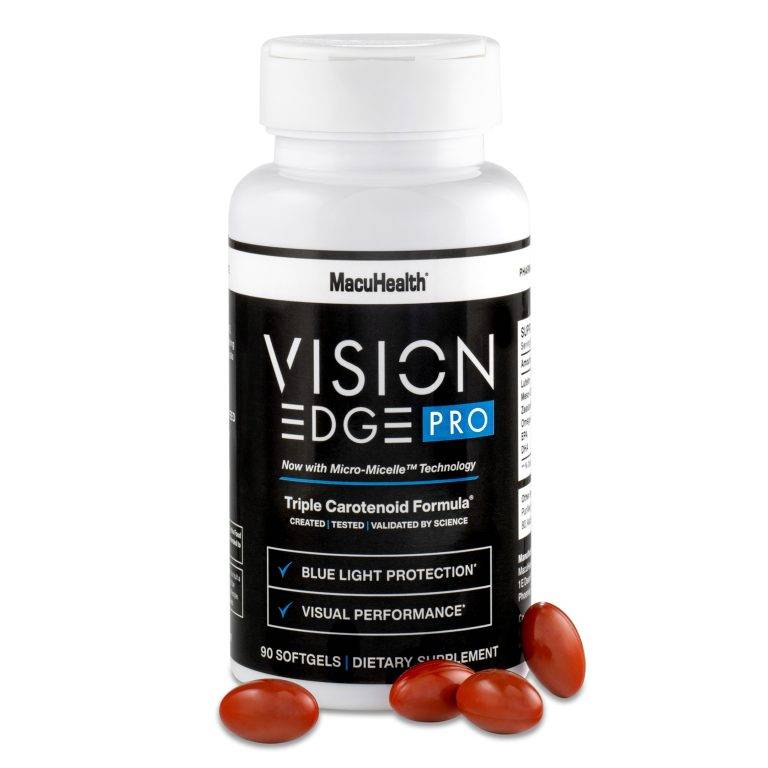SUBSCRIBE AND SAVE! | SIGN ME UP!

Written by MacuHealth
Reviewed by Jim Stringham, Ph.D.
Eye supplements, particularly those designed to manage the symptoms of age-related macular degeneration (AMD), are becoming increasingly popular. The nutrients in many high-quality supplements boost your eyesight and fill in some of the nutritional gaps in your diet. But research shows supplements may promise to include a defined amount of active ingredients on the label, yet the truth could be vastly different.
“We were amazed with what we saw,” John Nolan, founder and director of the Nutrition Research Centre Ireland (NRCI), told CTV News. “Not every product that’s commercially available actually has what it says on the label.”
When carotenoids are extracted from their source, they are vulnerable because the protective ester fatty acid chains are removed. Cheap formulations, such as powders and transparent capsules, as well as suboptimal storage techniques, can further degrade these nutrients. Supplements can lose their bioavailability to light and oxidation, meaning you aren’t getting everything promised on the label.
As the supplement industry becomes more crowded and competitive, it’s hard to know which supplements give consumers what they’re promised. This is why Supplement Certified was created. But what does it mean to have the logo of this third-party company on your supplement label? We’ll look at why ingredients degrade and the importance of testing their potency.
Though a supplement’s label may claim a certain amount of carotenoids, the truth is because of low-quality formulations and cost-saving techniques, that number might be significantly lower. Factors that can alter the bioavailability of nutrients in supplements include the molecular structure of the active ingredients and the encapsulation process.
The molecular structure and formulation of ingredients matter. For example, fish oil has re-esterified triglyceride and ethyl ester forms. While the latter is significantly cheaper to make, it’s much harder to absorb because of its synthetic form. The body recognizes re-esterified triglyceride fish oils, allowing them to be better absorbed.
Supplements are encapsulated in many forms: powder, softgel, liquid, etc. Powder-filled capsules tend to have a higher chance of degrading and losing bioavailability due to their clear interlock, making them more susceptible to light and oxygen exposure, which can lead to oxidation. However, oil-filled softgels have airtight closing with more protection from heat, light, and oxygen – factors that can significantly degrade nutrients.
Over 11 million people in the United States are affected by some form of AMD, with those over the age of 50 being the most vulnerable. According to the National Eye Institute, that number will likely double in 30 years. The disease affects the macula, the region of the retina that provides us with central vision.
Exciting new research has given AMD sufferers some hope in battling this degenerative disease. The body places three powerful carotenoids – Lutein, Meso-Zeaxanthin and Zeaxanthin – in the macula. Collectively, these carotenoids are called “macular pigment.” Their robust antioxidant properties make them capable of protecting the macula against oxidation.
Because the macular pigment is colored yellow, it absorbs potentially harmful blue light. This leads to improved visual performance, including better vision in glare, improved contrast sensitivity and enhanced night vision. Studies show these carotenoids can also potentially delay (or even halt) the progression of AMD.
Taking a macular carotenoid supplement regularly with a generally healthy diet can lower the risk of progressing to severe AMD by 25 percent and make a difference to those suffering from the disease. But if the potency of supplements disappears or diminishes, your eyes won’t receive the necessary nutrients to boost your vision or manage AMD symptoms.
Supplement Certified is transparent about its thorough testing process and goes the extra mile to test the stability of a supplement throughout its entire shelf life. Companies send batches to them for examination in their state-of-the-art laboratory and preserved in a constant climate chamber throughout testing. They assess three samples for content variability and obtain the full spectrum of possible carotenoids and fats that may be contained within the supplement. High-performance liquid chromatography (HPLC) is used to ensure the most accurate result.
When testing is complete, the manufacturer gets a report containing the results with pictures of the product package. A “pass” is received when the carotenoids equal or above the label-claimed amount and heterogeneity is below 10 percent. A “fail” is given if the measured concentration is below the amount on the label or it has a heterogeneity above 10 percent, even if the carotenoid amount is equal to or above the label claim.
As of this writing, Supplement Certified tested 89 supplement brands, with just over half of them passing the company’s tests. MacuHealth is proud to meet the standards of Supplement Certified so it can carry its seal on all its supplements. For more information on Supplement Certified, visit supplementcertified.ie.

Formulated by scientists and clinically proven to support eye health for both healthy and diseased eyes.

Based on the AREDS2 formula with 10 mg of Meso-Zeaxanthin and reduced levels of zinc for the ultimate defense against AMD.

Created for those wanting to protect against blue light and improve visual performance for everyday maintenance.

Sourced from small, open-water catch fish from the coast of Chile, TG Omega-3 provides customized dosing for patient specific needs.